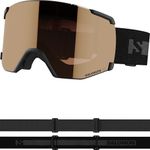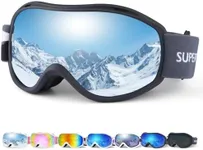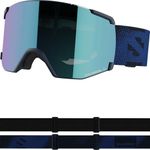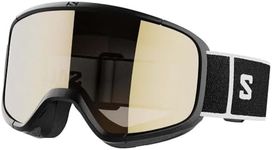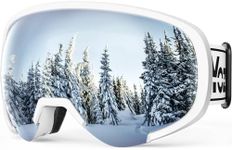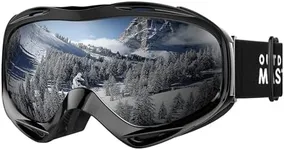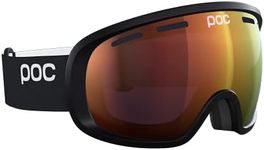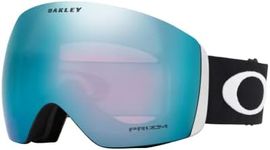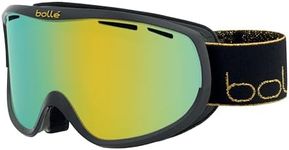Buying Guide for the Best Ski Goggles
When choosing ski goggles, it's important to consider the conditions you'll be skiing in, your personal comfort, and the level of protection you need. Ski goggles are essential for protecting your eyes from the sun, wind, and snow, while also enhancing your vision on the slopes. The right pair of goggles can make a significant difference in your skiing experience, providing clarity and comfort. To find the best fit for you, consider the following key specifications.Lens TypeThe lens type of ski goggles is crucial as it affects your visibility and eye protection. There are cylindrical lenses, which are curved horizontally and flat vertically, and spherical lenses, which are curved both horizontally and vertically. Cylindrical lenses are generally more affordable and provide decent peripheral vision, while spherical lenses offer better optics and less distortion, making them ideal for serious skiers. Choose cylindrical lenses for casual skiing or if you're on a budget, and spherical lenses if you prioritize optical clarity and comfort.
Lens TintLens tint is important because it determines how much light is allowed through the lens, affecting visibility in different weather conditions. Lighter tints like yellow or rose are suitable for low-light or overcast conditions, while darker tints like black or mirrored are better for bright, sunny days. Some goggles come with interchangeable lenses, allowing you to switch tints based on the weather. Consider the typical weather conditions where you ski most often and choose a lens tint that will provide the best visibility in those conditions.
UV ProtectionUV protection is a critical feature in ski goggles as it shields your eyes from harmful ultraviolet rays, which are more intense at higher altitudes. Most quality ski goggles offer 100% UV protection, which is essential for preventing eye damage. Always ensure that the goggles you choose provide full UV protection, regardless of the lens tint or type, to keep your eyes safe while skiing.
Anti-Fog CoatingAnti-fog coating is a feature that prevents the lenses from fogging up, which can obstruct your vision while skiing. This is particularly important in cold and humid conditions. Goggles with a good anti-fog coating will have better ventilation and moisture-wicking properties. If you often ski in varying temperatures or humid conditions, prioritize goggles with a reliable anti-fog coating to maintain clear vision.
Fit and ComfortThe fit and comfort of ski goggles are essential for ensuring they stay in place and feel comfortable during long skiing sessions. Goggles should fit snugly without pinching or causing discomfort. Look for adjustable straps and foam padding that conform to your face shape. If you wear a helmet, ensure the goggles are compatible with it. Try on different models to find the one that feels most comfortable and secure for your face and head shape.
VentilationVentilation in ski goggles helps to reduce fogging by allowing air to circulate inside the goggles. Good ventilation is achieved through strategically placed vents on the frame. If you ski in warmer conditions or tend to overheat, look for goggles with ample ventilation to keep your vision clear. However, in extremely cold conditions, too much ventilation might let in cold air, so balance is key based on your typical skiing environment.
